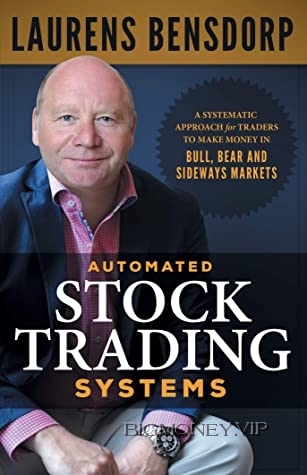
C h a p t e r 1
BetterReturnsRegardlessof MarketPerformance
By early 2008, many traders were feeling pretty good. The
last six years had been a nice ride. Almost everyone wanted
to get in on the party—or was already enjoying it. It seemed
like the fun would never end.
We all know what happened next: the worst financial crisis
since the Great Depression occurred. The financial system
nearly collapsed after Lehman Brothers went bankrupt in
September. The S&P 500 index dropped 56 percent in the
months following. Traders who had been riding high woke
up and truly felt like vomiting. Anyone who had the
stomach to ride it all the way down lost half their money.
Perhaps they lost a little less if they got out earlier, or a
little more if they had to pay fees to those financial advisors
telling them to stick it out.
Regardless, traders who were thinking about retirement
realized they now had to earn approximately 100 percent
after-tax return just to get back to where they had been
before the crash. Those who rode it down, stayed in, and
rode it back up didn’t break even until 2013. That was a
long five years, and it disrupted people’s lives terribly.
Five years of being in a drawdown position causes
enormous financial pain. People who thought they could
retire instead kept working. People who had retired tried to
go back to work, if they could find a job. People who were
still working wondered if they ever could retire. The pain
wasn’t just financial, it was deeply psychological. When
someone says, “I need to go back to work because my life
savings are basically gone,” they have experienced huge
pain. Unless they were trading on the short side during the
collapse—and the vast majority of traders were not—people
were not protected. They lost a huge amount of money and
didn’t know where to go from there.
This wasn’t the first collapse many traders had experienced
—the last one had come just a few years prior. The factors
behind the collapse in 2008 were complex and would take
years to sort out, but the 2000 dot-com crash was a
textbook case of boom-and-bust. As Internet stocks zoomed
to new highs, traders who had no idea what they were
doing got into the market. They didn’t have any sort of
investment process; they were participating in a mania that
saw huge markups in stock prices from 1995 to 2000, not
unlike the very first market bubble almost 400 years
earlier, the Dutch tulip mania.
Manias are a byproduct of markets. The tulip mania was
the first in the modern era, a speculative bubble among
futures traders the likes of which no trader in the
Netherlands ever had experienced, and which no one
expected would ever end. At its peak, in February 1637, a
single bulb sold could sell for ten times the annual salary of
a skilled craftsman. By May of that year, the price had
fallen roughly 95 percent. Once traders realized that
buyers could not be found at higher prices, the market
collapses.
In the late 1990s, everyone was talking about the stock
market, and everyone seemed to be making money. Their
neighbors and friends were making money, and they didn’t




